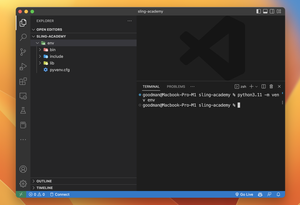Introduction
The Python requests module is commonly used for sending HTTP requests. However, developers may sometimes encounter a ‘Timeout exception’ error. This can be frustrating but can usually be resolved with a few troubleshooting steps.
Timeout exceptions occur when a request takes longer than the prescribed time to return a response. This can be due to network issues, server problems, or inefficient code. Below we’ll explore some solutions to fix this error, alongside their advantages and limitations.
Solution 1: Increase Timeout Duration
Solution description: Adjusting the timeout parameter in the request can provide the server with more time to respond, preventing the exception.
- Step 1: Identify the request causing the timeout.
- Step 2: Increase the timeout parameter value.
Example:
import requests
url = 'https://example.com'
try:
response = requests.get(url, timeout=30) # Increase timeout as needed
print(response.content)
except requests.exceptions.Timeout:
print('The request timed out')
except requests.exceptions.RequestException as e:
print(e)
Pros: Simple and effective; can be enough for slow networks or busy servers.
Cons: Not a solution if the server is unresponsive; can lead to delays in your program.
Solution 2: Retry Strategy
Solution description: Implement a retry mechanism that attempts the request multiple times before failing.
- Step 1: Install the
urllib3library if not already available. - Step 2: Use a
Sessionfrom the requests library. - Step 3: Mount a retry strategy using
HTTPAdapterwith appropriate configuration. - Step 4: Send a request using the session.
Example:
import requests
from requests.adapters import HTTPAdapter
from requests.packages.urllib3.util.retry import Retry
retry_strategy = Retry(
total=3,
status_forcelist=[429, 500, 502, 503, 504],
method_whitelist=['HEAD', 'GET', 'OPTIONS'],
backoff_factor=1
)
adaptor = HTTPAdapter(max_retries=retry_strategy)
session = requests.Session()
session.mount('http://', adaptor)
session.mount('https://', adaptor)
url = 'https://example.com'
try:
response = session.get(url)
print(response.content)
except requests.exceptions.RequestException as e:
print(e)
Pros: Resilient against intermittent issues; customizable for different scenarios.
Cons: May increase the time taken to detect a real problem with the server.
Solution 3: Asynchronous Requests
Solution description: Use an asynchronous requests library, like aiohttp, to perform non-blocking requests, possibly improving speed and efficiency.
- Step 1: Install the
aiohttplibrary if not already available. - Step 2: Use the
aiohttpsession to send an asynchronous request. - Step 3: Add error handling for timeouts.
Example:
import aiohttp
import asyncio
async def fetch(url):
async with aiohttp.ClientSession() as session:
try:
async with session.get(url, timeout=30) as response:
print(await response.text())
except asyncio.TimeoutError:
print('The request timed out')
except Exception as e:
print(e)
loop = asyncio.get_event_loop()
loop.run_until_complete(fetch('https://example.com'))
Pros: Non-blocking; can handle numerous requests efficiently.
Cons: Asynchronous programming is a paradigm shift; dealing with its complexity can be difficult for beginners.











